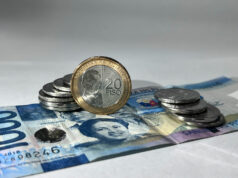Peso seen sideways on mixed signals from US
THE PESO may move sideways versus the dollar this week as mixed key US economic developments may fail to give concrete details on the Federal Reserve’s planned interest rate hike within the year and as global investors wait for US non-farm payrolls (NFP) data set to be released this week.
The local currency closed at P50.47 against the greenback on Friday, appreciating by six centavos from its P50.53 per dollar finish on Thursday, which was the peso’s weakest level in more than a decade or since it finished at P50.54 per dollar on Sept. 11, 2006.
Week on week, however, the peso slumped from its P50.22 close last June 23.
An economist from a local bank said the local currency may test the P50.10 to P50.60 to the dollar this week as recent economic developments in the US, particularly softer economic data, gave little clarity on the Fed’s planned policy tightening by yearend.
“The dollar might move sideways [this] week, with a downward bias, amid mixed US signals, which could unlikely provide additional clarity about the likelihood of another US interest rate hike before the year ends,” Guian Angelo S. Dumalagan, market economist at Land Bank of the Philippines, said in an e-mail over the weekend.
He added that St. Louis Federal Reserve Bank President James Bullard and San Francisco Federal Reserve Bank President John C. Williams’ likely hawkish speeches this week could support a stronger dollar against the peso, but with softer-than-expected US personal consumption expenditure inflation and spending limiting the greenback’s strength.
“The likely hawkish speeches from Fed Bullard and Fed Williams might continue to support the dollar, but weak US reports on personal consumption expenditure (PCE) inflation and personal spending as well as potentially soft US non-manufacturing data could trim the dollar’s recent gain,” he added.
Mr. Bullard and Mr. Williams are set to deliver their speeches about the US economy today and on Thursday, respectively.
Landbank’s Mr. Dumalagan, however, noted the foreign currency’s expected decline could be reversed by upbeat US non-manufacturing, ADP employment and balance of trade data, as well as persisting political noise offshore.
“The factors that could reverse the dollar’s projected downward bias include better-than-expected US reports on non-manufacturing, ADP employment and balance of trade as well as safe-haven buying amid weaker-than-expected Chinese data on manufacturing and services.”
“Unexpected political issues abroad, which could fuel uncertainty, might also alter the greenback’s forecasted downward bias by increasing the dollar’s safe-haven appeal,” Mr. Dumalagan added.
Meanwhile, a trader said in a phone interview on Friday that the peso-dollar pair may consolidate as investors are on a wait-and-see mode for key US jobs data, which will be released on Friday.
“The pair’s trading may consolidate because market players are waiting for US NFP, which is a big data, on Friday,” the trader said, noting the exchange rate may fall within P50.30 to P50.60 on Monday.
BDO Unibank, Inc.’s Chief Market Strategist Jonathan L. Ravelas said: “The week’s close at P50.47 highlights the dollar bulls are in control. This puts the P51.00 — P51.50 within striking distance. Trading range [this] week is seen between P50.30/P50.60 levels.” — Janine Marie D. Soliman
The peso could move within a tight range due to mixed US reports and ahead of key jobs data. — BW FILE PHOTO



